Looking for the smartest healthcare BI tools for 2025? Here are your top picks:
- Microsoft Power BI
- Tableau
- Qlik Sense
- FineBI
- IBM Cognos Analytics
- Domo
- SAP BusinessObjects
Hospitals and clinics like yours use these solutions to integrate healthcare data, make faster decisions, and keep up with strict compliance requirements. Check out the numbers below to see how quickly healthcare BI tools are taking off:
| Metric | Value |
|---|---|
| Market Size in 2025 | USD 12.95 Billion |
| Market Size in 2034 | USD 35.72 Billion |
| Growth Rate from 2025 to 2034 | CAGR of 13.52% |
These tools help you connect data from everywhere, stay compliant, and act on insights in real time.
Why Healthcare BI Tools Matter
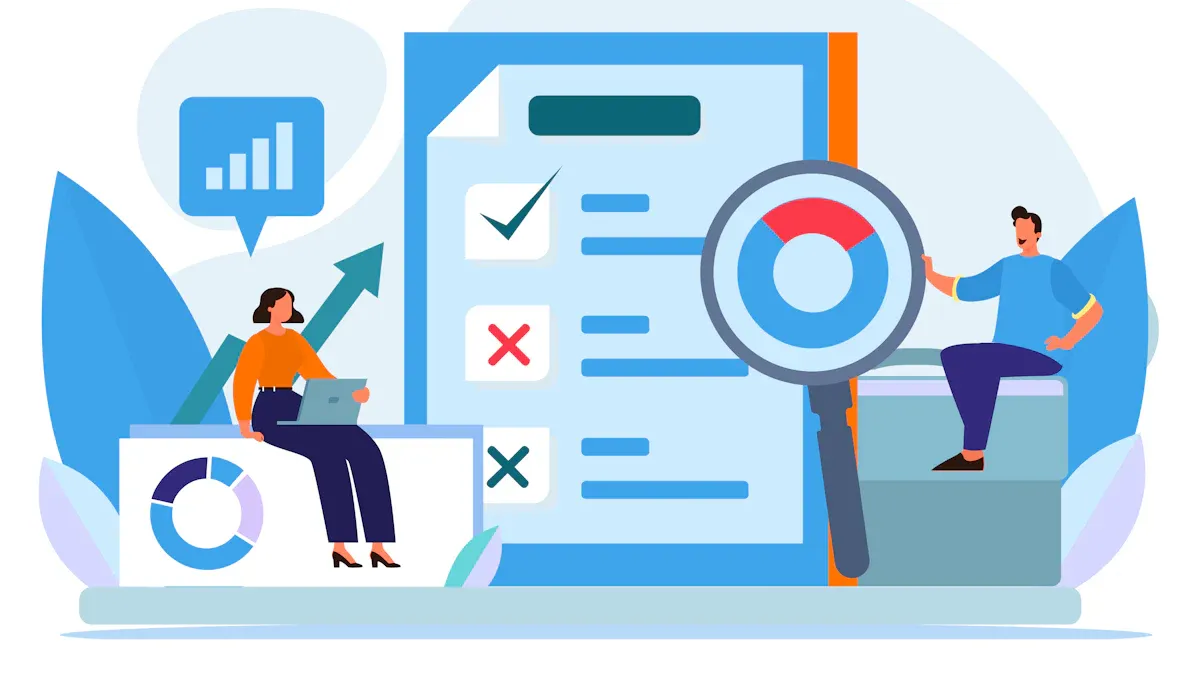
The Impact of Healthcare Data Analytics
You probably notice how much data flows through hospitals and clinics every day. In fact, the healthcare sector creates about 30% of all global data, but almost all of it goes unused. That’s a huge missed opportunity. When you use healthcare BI tools, you turn that raw information into real insights. These tools help you spot trends, make faster decisions, and improve patient care.
Here’s what happens when you put healthcare data analytics to work:
- You get clearer, more confident decisions for both operations and patient care.
- Teams can transform scattered data into meaningful insights.
- Organizations that focus on value-based care use analytics to turn information into action, not just storage.
- The right BI tools help you boost operations, patient outcomes, and even your bottom line.
Let’s look at some real-world results. With advanced analytics and real-time monitoring, you can catch issues before they become problems. Clinical decision support systems help doctors make better diagnoses by comparing patient data to huge medical databases. You can also use population health management to find high-risk groups and create targeted care plans. Quality improvement teams track key metrics in real time, so you can fix problems fast. Even things like staff scheduling, equipment use, and supply chain management get easier and more efficient.
Compliance and Security in Healthcare BI
You know that protecting patient information is a top priority. Healthcare BI tools must keep sensitive data safe and meet strict rules like HIPAA. But there are challenges:
- Sometimes, people accidentally or intentionally share protected health information (PHI) without permission.
- Data analytics workflows can have weak spots, like insecure storage or bad permission settings.
- Employees might use unauthorized devices or apps, creating security gaps.
Here are some of the biggest hurdles you face:
- Healthcare IT systems are complex, with lots of old and new technology mixed together.
- Cyber threats keep changing, so you need to update security measures all the time.
- Human error is always a risk—someone might expose sensitive data by mistake.
When you choose a BI tool, make sure it offers strong security, clear permissions, and regular updates. That way, you can focus on using your data to improve care, knowing your information stays protected.
Top 7 Healthcare BI Tools in 2025
Choosing the right healthcare BI tools can make your job easier and your organization smarter. Let’s break down the top options for 2025. You’ll see what makes each tool stand out, how they help with healthcare analytics, and why they matter for compliance and security.
Quick Criteria Table:
Here’s how experts evaluate the best healthcare BI tools for 2025:
| Criteria | Description |
|---|---|
| Data Integration | Connects to many data sources for complete analysis. |
| User Interface | Easy to use and accessible for everyone. |
| Advanced Analytics | Offers predictive analytics and deep insights. |
| Data Scalability | Handles growing amounts of data without slowing down. |
| Customization | Lets you tailor dashboards and reports to your needs. |
| Compliance | Meets regulations like HIPAA to protect patient data. |
| Security Measures | Uses encryption and strict access controls. |
| Real-time Analytics | Delivers insights and updates instantly. |
1.Microsoft Power BI
You want a tool that’s easy to use and powerful. Microsoft Power BI gives you interactive dashboards, automated reports, and real-time alerts for critical metrics. You can filter and drill down into data with just a few clicks. Hospitals use Power BI to forecast admissions, spot anomalies in infection rates, and analyze patient feedback.
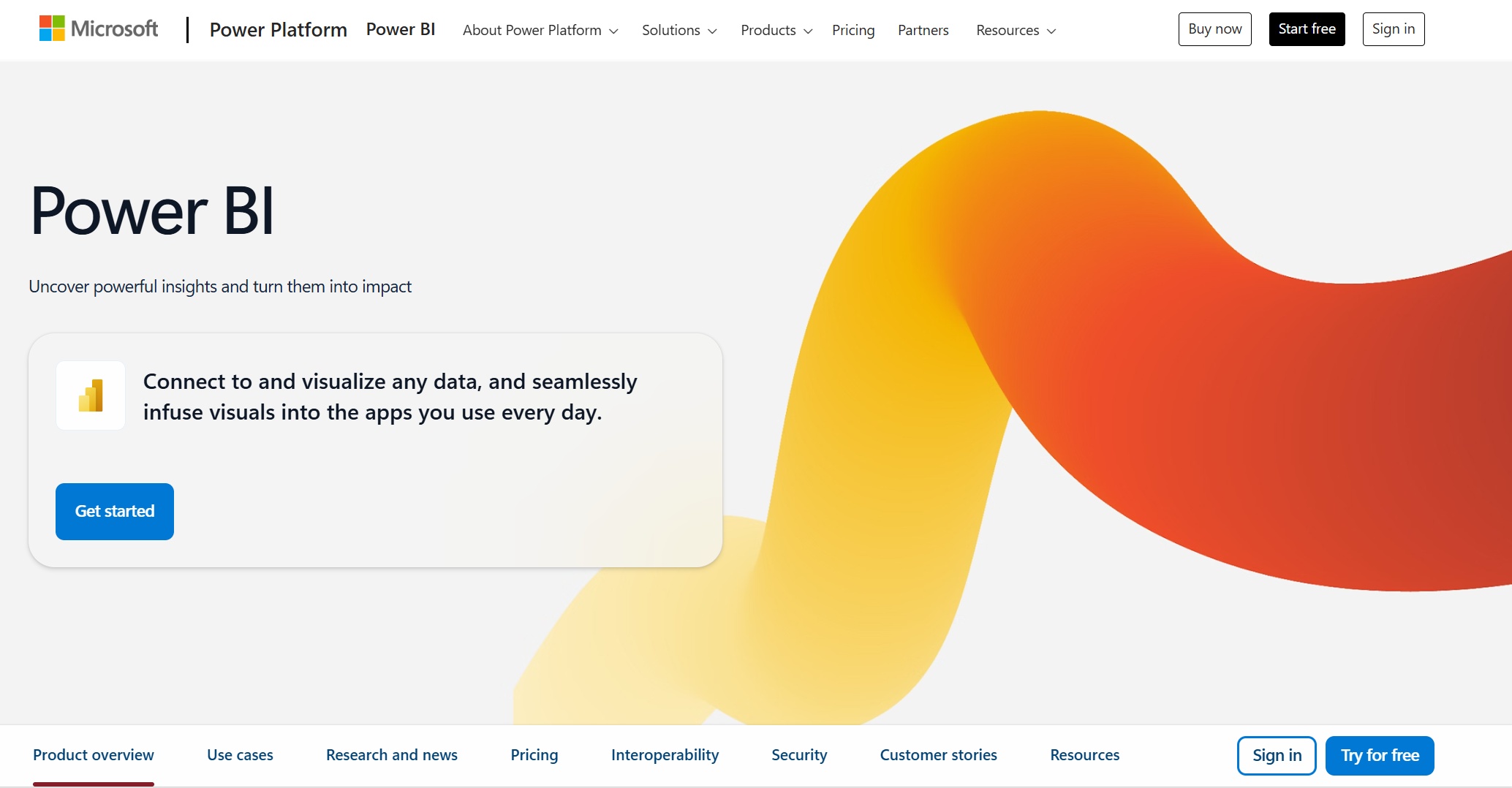
Website: https://www.microsoft.com/en-us/power-platform/products/power-bi
| Feature | Description |
|---|---|
| Predictive Analytics | Forecasts hospital admissions for better planning. |
| Anomaly Detection | Spots sudden spikes in infection rates. |
| Text Analytics | Analyzes patient feedback for care quality insights. |
Power BI stands out for its seamless integration with Microsoft tools and healthcare platforms. You get real-time analytics for patient care, and the interface is user-friendly, so staff can pick it up quickly. The platform supports HIPAA, GDPR, and other standards, with encryption, role-based access, and audit logs. You can sign a Business Associate Agreement for extra compliance. Power BI also offers flexible pricing, including a free version, making it accessible for organizations of all sizes.
2.Tableau
If you want to visualize complex healthcare data, Tableau is a top choice. You can track patient data, monitor emergency cases, and share dashboards instantly. Tableau’s charts, graphs, and maps make it easy to spot trends and analyze statistics. Real-time monitoring helps you keep up with live health conditions.
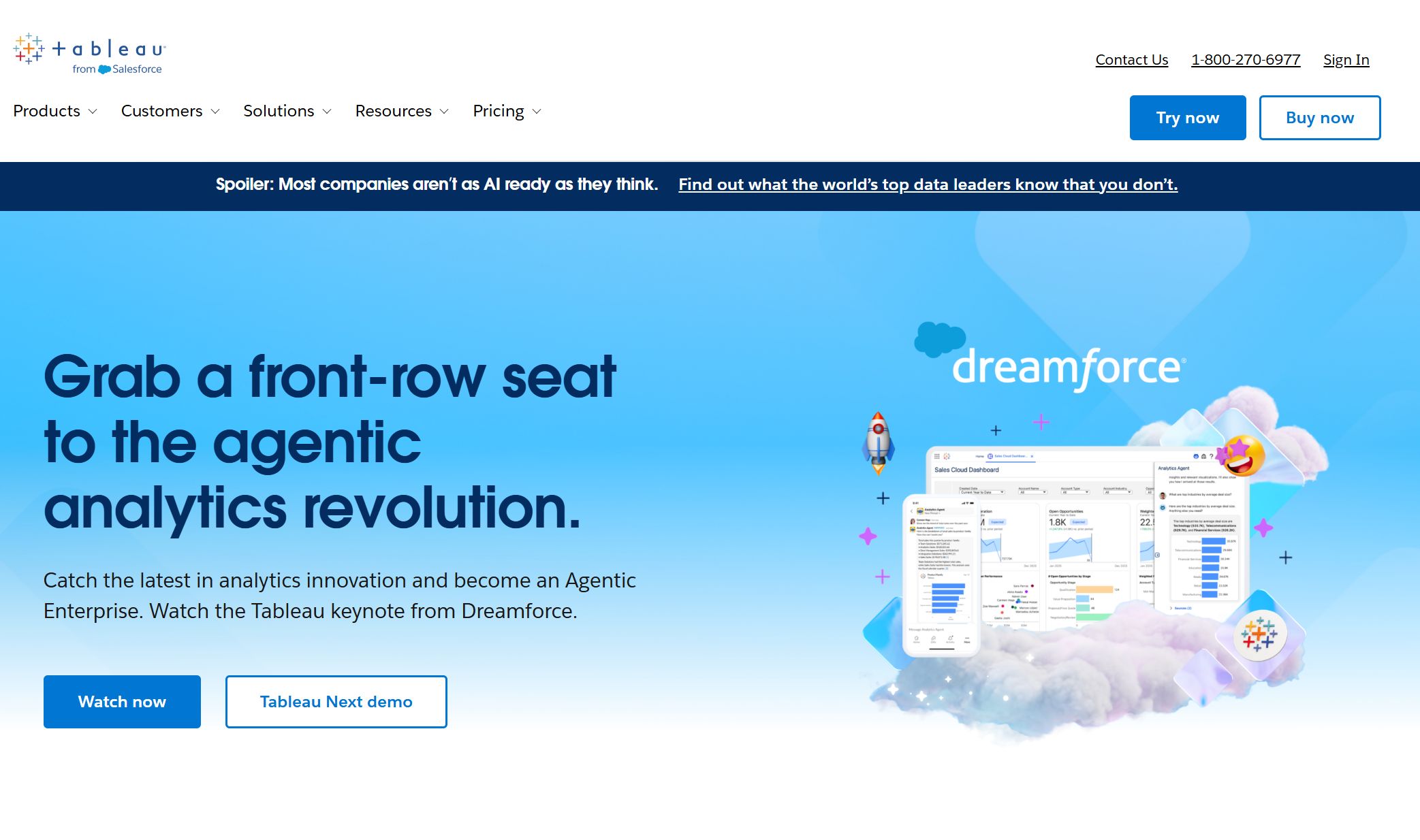
Website: https://www.tableau.com/
- AI agents guide you through data exploration.
- Natural language queries let you ask questions and get answers fast.
- AI-powered reporting surfaces insights and suggests actions.
Tableau handles large datasets and complex calculations, so you can dig deep into healthcare analytics. You’ll find hidden patterns, like links between patient demographics and treatment outcomes. The platform supports secure sharing and compliance, making sure sensitive information stays protected.
3.Qlik Sense
Qlik Sense gives you flexibility and speed. You can connect to many data sources and build interactive dashboards without coding. The tool’s associative engine lets you explore data from every angle, so you never miss a connection. Healthcare teams use Qlik Sense for population health management, resource planning, and clinical analysis.
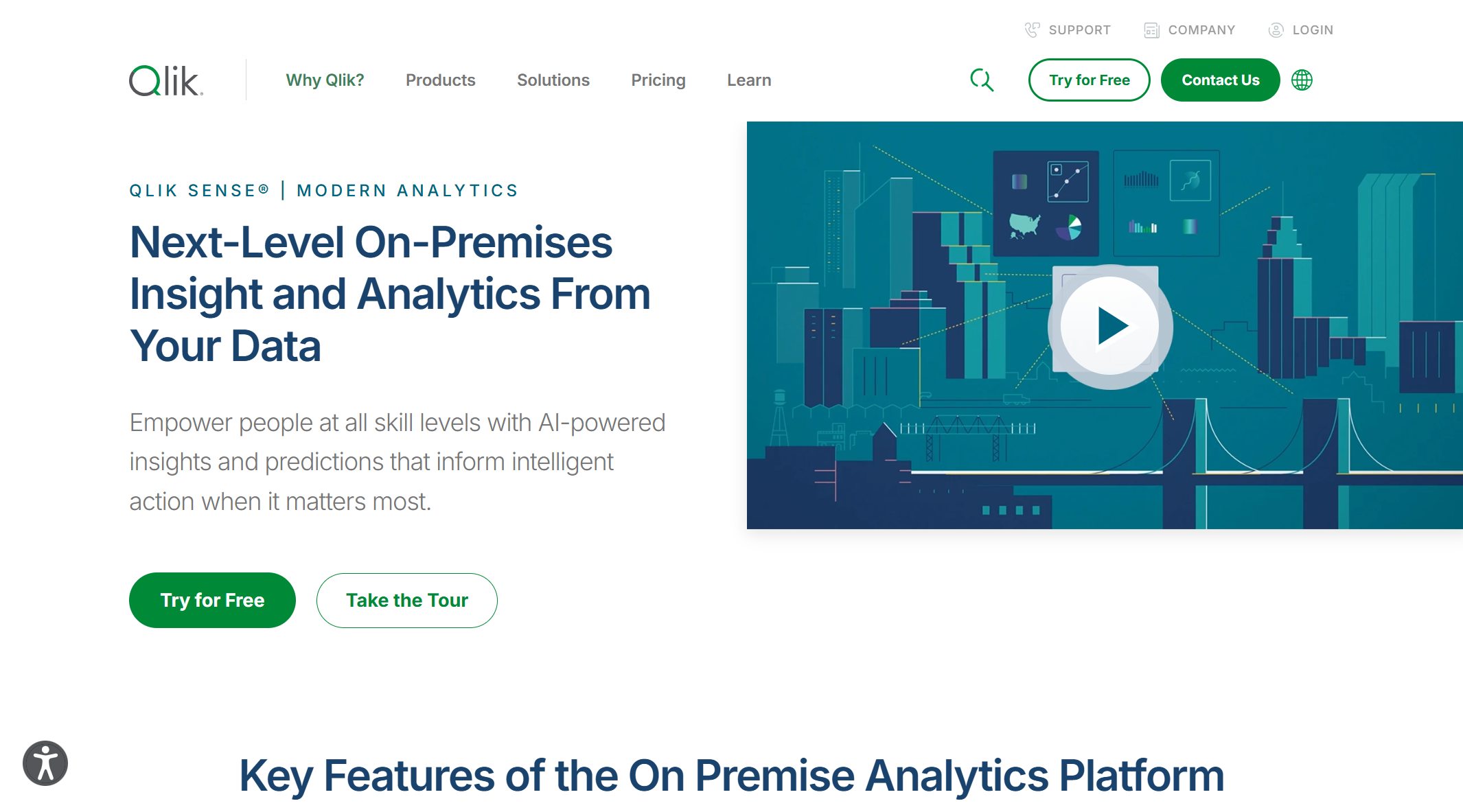
Website: https://www.qlik.com/us/products/qlik-sense
- Real-time dashboards help you monitor key metrics.
- Predictive analytics powered by AI show you what’s coming next.
- Strict user access controls and audit trails keep data safe.
Qlik Sense supports HIPAA and other regulations, with encryption and strong security features. You can customize dashboards for different departments, making it easy to share insights across your organization.
4.FineBI for Healthcare Analytics
You want a business intelligence software that’s both powerful and easy to use. FineBI brings self-service analytics to everyone in your organization. You can connect to over 60 data sources, including big data platforms, relational databases, and Excel files. FineBI’s drag-and-drop interface lets you build interactive dashboards and visualizations without writing code.
\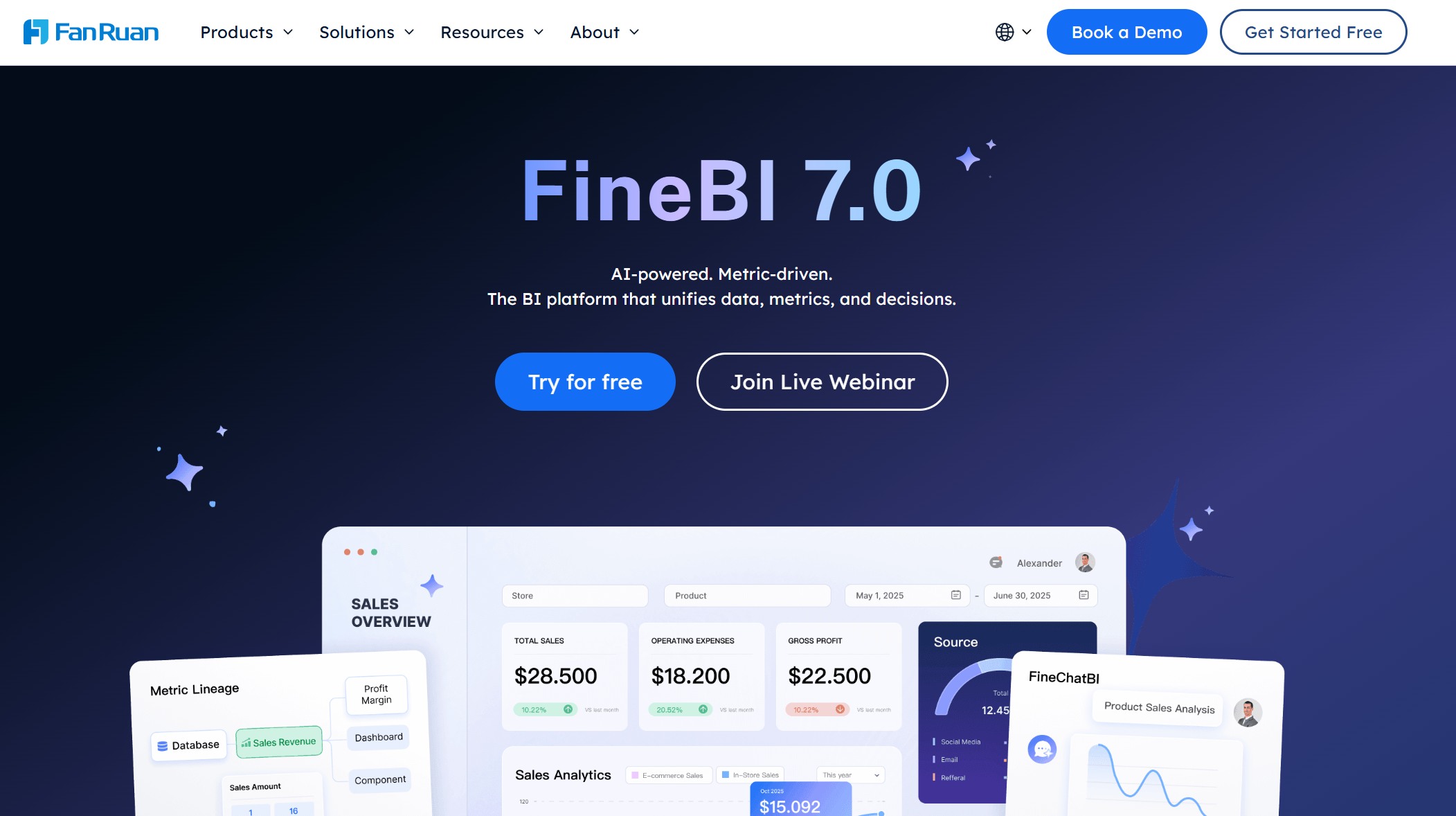
Website: https://www.fanruan.com/en/finebi
- Real-time analysis means you see updates instantly after data changes.
- Data integration features help you unify patient data from multiple systems.
- Flexible ETL and ELT processing modes let you clean and prepare data for healthcare analytics.
- Enterprise governance tools give you row-level security, audit logs, and role-based access control.
- AI-driven insights help you spot trends, predict outcomes, and make better decisions.
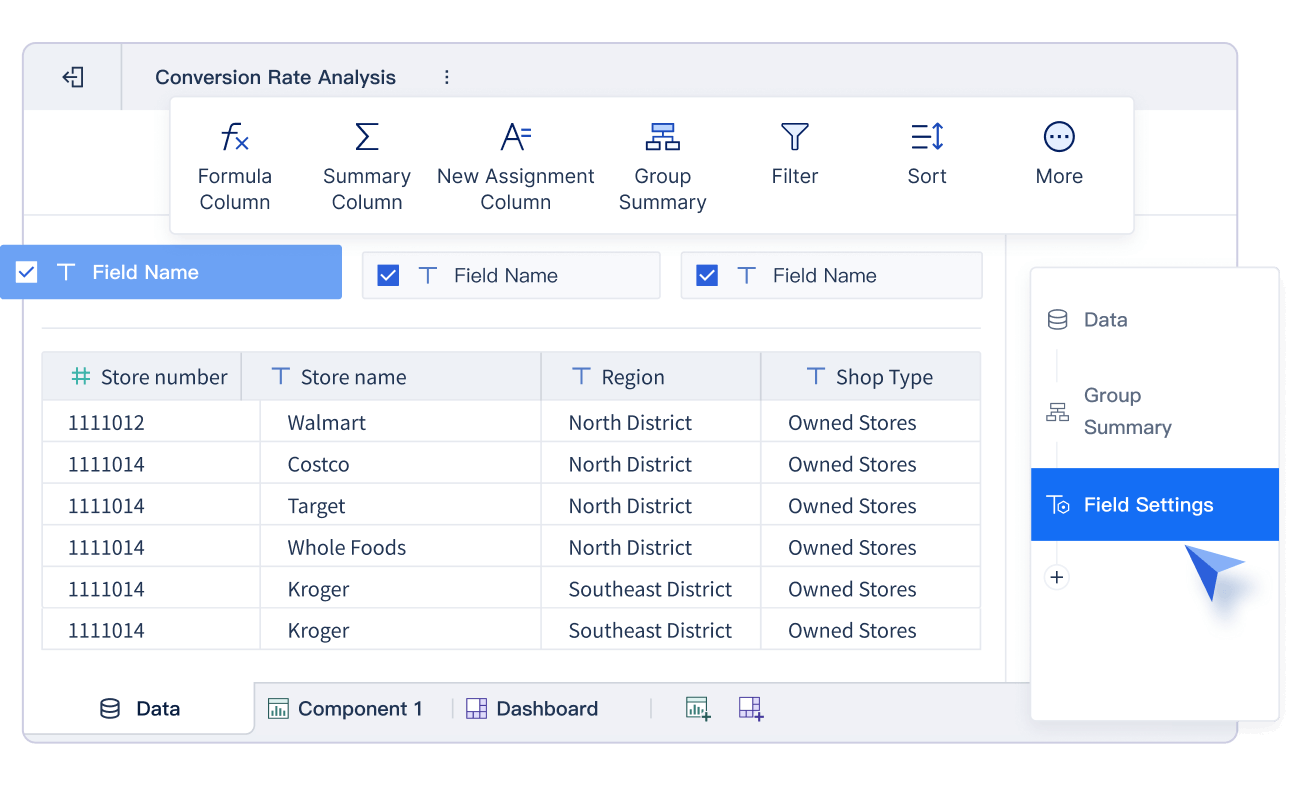
FineBI supports compliance with HIPAA and GDPR, so you know patient information stays protected. You can automate routine tasks, saving time and letting staff focus on patient care. The platform’s high-performance engine handles massive datasets and supports thousands of users at once. You get a solution that grows with your needs and keeps your data management secure.
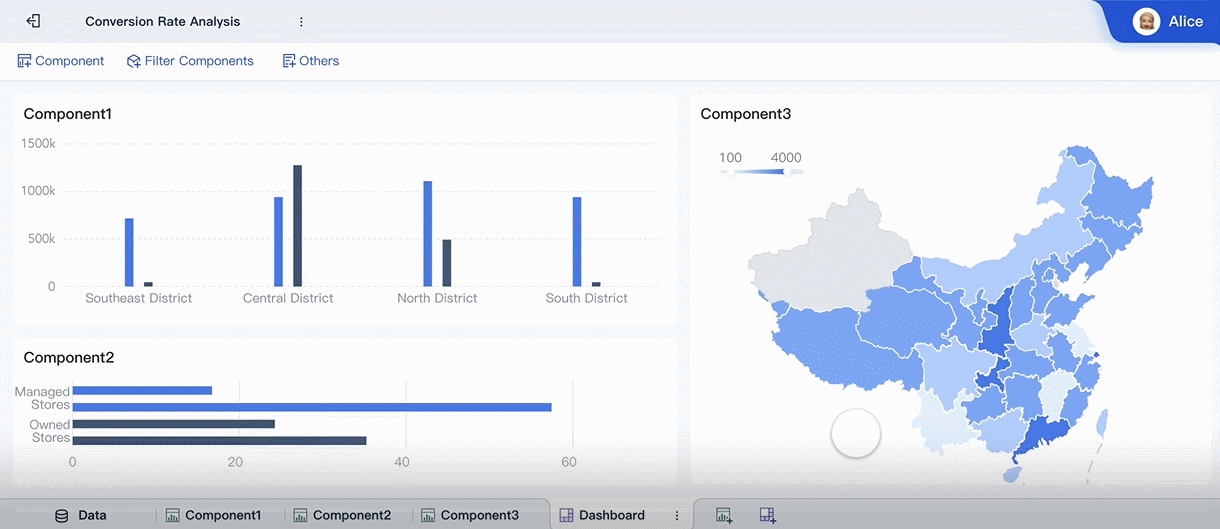
| Feature | Description |
|---|---|
| Personalized Treatment Plans | Analyzes patient data to create tailored care plans. |
| Early Disease Detection | Finds health issues early for timely intervention. |
| Enhanced Data-Driven Decisions | Empowers informed choices for better healthcare practices. |
| Evidence-Based Practices | Identifies effective treatments using clinical data analysis. |
| Strategic Planning | Uses operational data for resource allocation and improvement. |
| Increased Efficiency | Streamlines operations and reduces waste. |
| Time Savings | Automates tasks so staff can focus on patients. |
| Reduced Waste | Optimizes inventory and lowers costs. |
5.IBM Cognos Analytics
IBM Cognos Analytics helps you improve operations and care quality. You can monitor key performance indicators, align clinical processes, and optimize revenue cycles. The platform supports enterprise planning and gives you transparency with cost and quality information.

Website: https://www.ibm.com/products/cognos-analytics
- Operational efficiencies reduce costs and improve workflows.
- Care quality improves with real-time monitoring and analytics.
- Regulatory compliance is built in, with pay-for-performance reporting and metric tracking.
Cognos supports HIPAA and other standards, so you can trust your data is safe. You get audit trails, role-based access, and encryption to protect patient information.
6.Domo
Domo makes healthcare analytics simple and secure. You get ai-driven insights to improve patient care and financial performance. The platform integrates systems and automates tasks, streamlining operations across your organization.
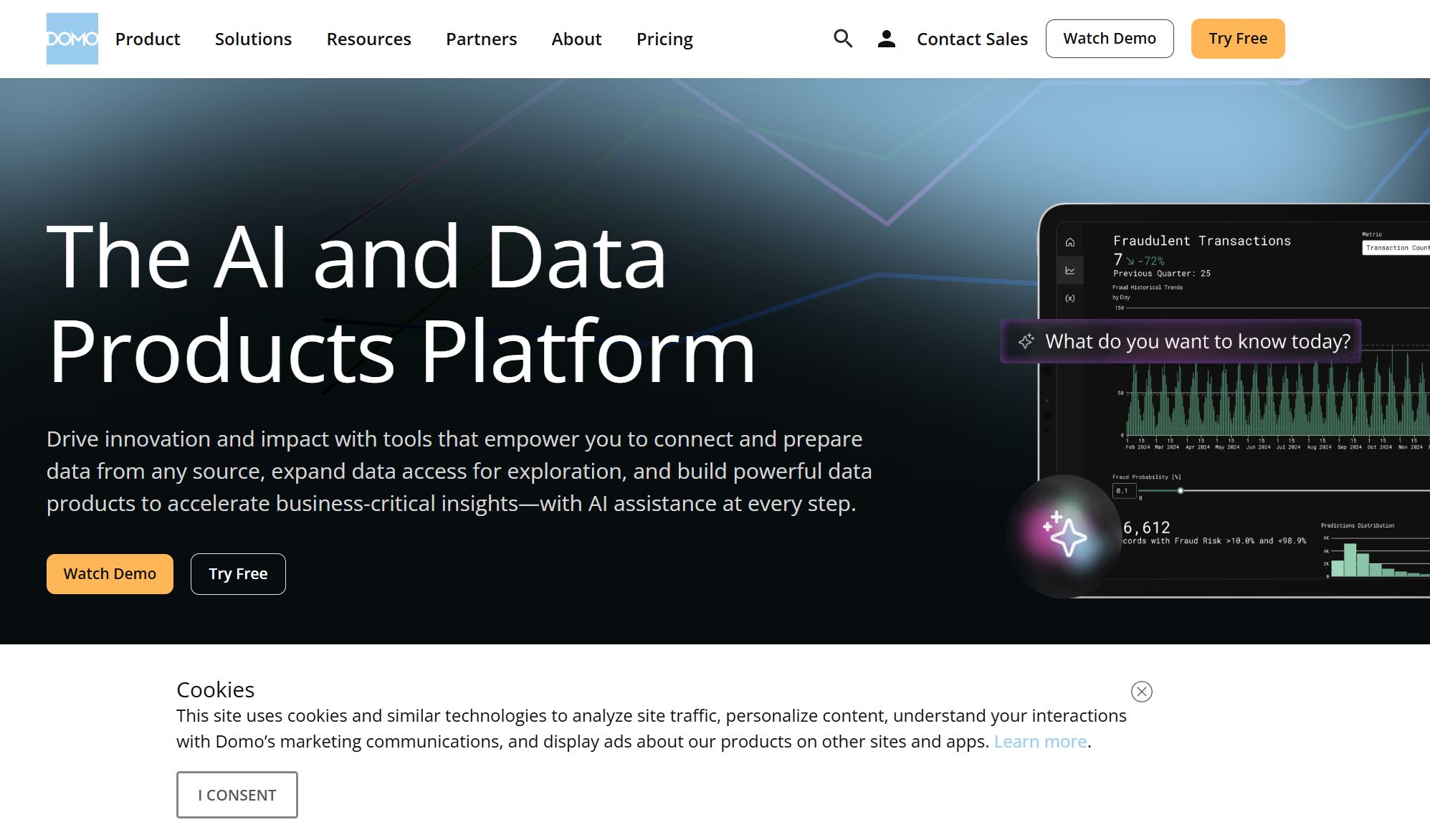
Website: https://www.domo.com/
- Domo’s Trust Program covers security, compliance, and privacy.
- SAML-based SSO and Multi-Factor Authentication keep data safe.
- You can manage your own encryption keys for extra control.
Domo supports HIPAA and other regulations, so you know patient data is protected. Real-time monitoring and predictive analytics help you respond quickly to changes in patient health or operations.
7.SAP BusinessObjects
SAP BusinessObjects offers robust security and compliance for healthcare organizations. You can control sensitive information and meet strict governance standards. The platform scales across on-premises, hybrid, and cloud environments, adapting to your infrastructure.
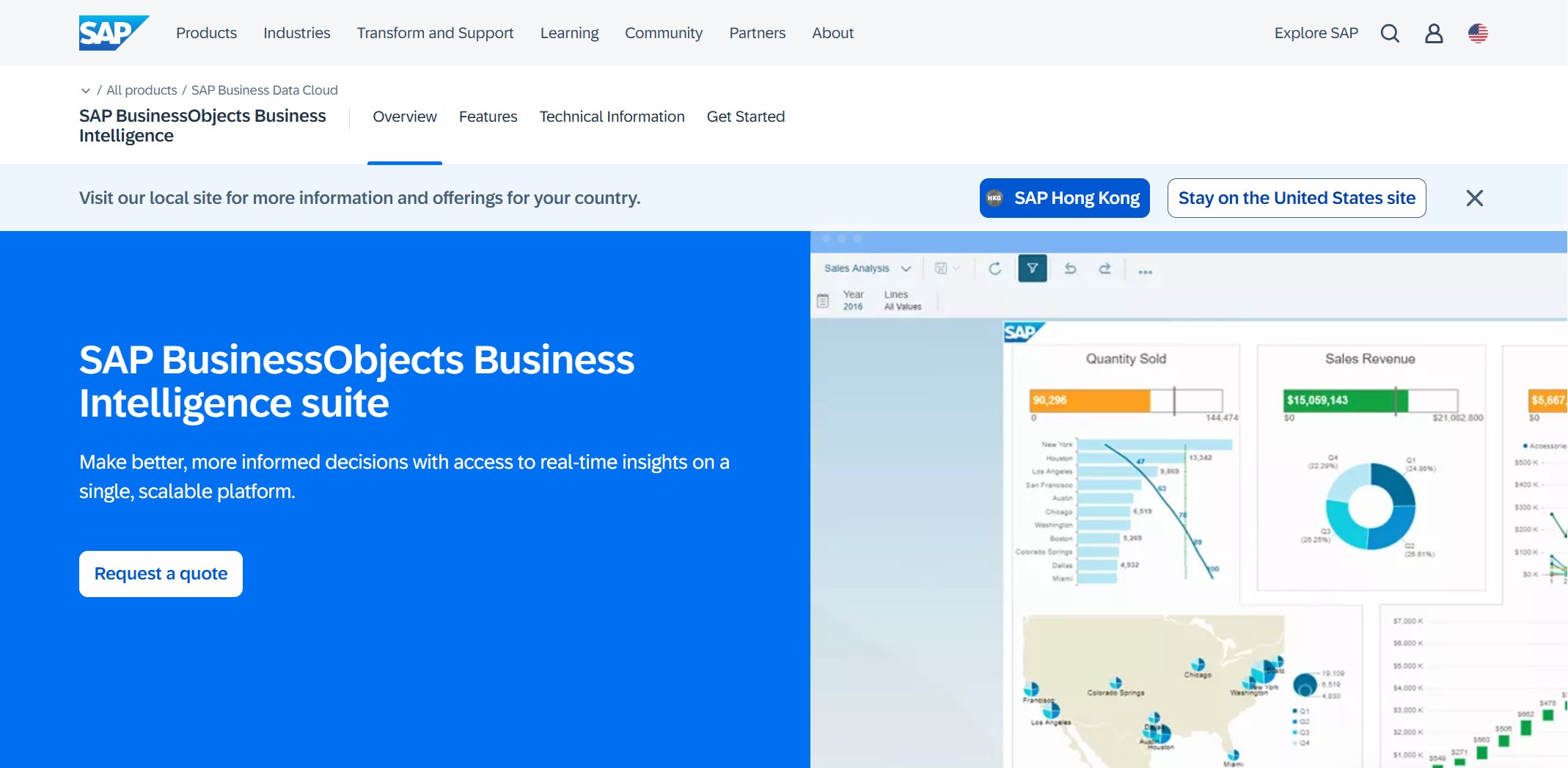
Website: https://www.sap.com/products/data-cloud/bi-platform.html
| Strengths of SAP BusinessObjects in Healthcare Analytics for 2025 | Description |
|---|---|
| Robust Security and Compliance | Full control over sensitive information and strict governance. |
| Scalability | Works with any environment, from on-premises to cloud. |
| Integration Capabilities | Connects smoothly with ERP systems for better reporting. |
| Continuous Innovation and Support | Regular updates and new features keep you ahead. |
SAP BusinessObjects integrates with a wide range of systems, making data management and reporting easier. You get continuous innovation and support, so your healthcare analytics stay current and effective.
Tip:
When you compare business intelligence tools, look for real-time analytics, strong security, and easy integration. The right tool helps you turn healthcare data into actionable insights, improves patient outcomes, and keeps your organization compliant.
Key Features of Healthcare BI Tools
Data Integration and Connectivity
You want your healthcare BI tools to connect with every system in your organization. Data integration is the backbone of healthcare data analytics. When you bring patient data from different sources together, you get a complete picture. Some tools, like Talend and Celigo, offer built-in connectors and automation. Others, such as Mirth Connect, support healthcare standards like HL7 and DICOM. FanRuan FineBI stands out with over 60 connectors, real-time synchronization, and easy integration with big data platforms and Excel files. You can unify patient data from clinics, labs, and billing systems without coding.
| Tool Name | Data Integration Features | Pros |
|---|---|---|
| Talend | Batch and real-time integration, healthcare standards | Comprehensive platform |
| Celigo | Built-in connectors, visual UI, process automation | Low-code interface |
| Mirth Connect | HL7, XML, DICOM, message routing | Free, strong community |
| FineBI | 60+ connectors, real-time sync, self-service integration | Easy to use, scalable, secure |
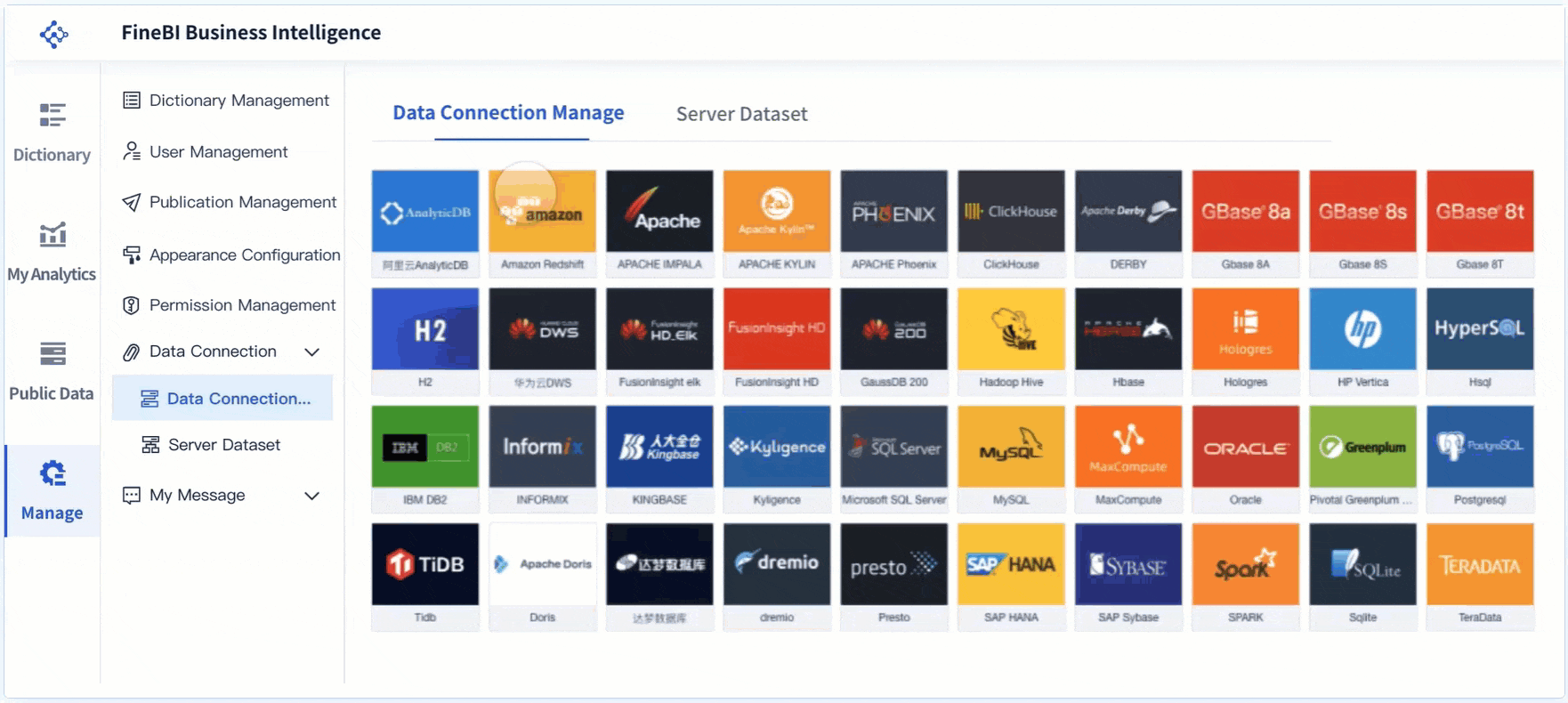
Advanced Analytics and Visualization
You need analytics that go beyond simple charts. The best healthcare BI tools offer predictive analytics, natural language processing, and powerful data visualization tools. You can forecast patient admissions, spot trends, and create interactive dashboards. FineBI lets you drag and drop charts, apply filters, and use AI-driven insights. You don’t need technical skills to build dashboards or explore data. Other tools, like Tableau and Qlik Sense, also provide rich visualizations and predictive analytics, but FineBI’s self-service approach makes analytics accessible to everyone.
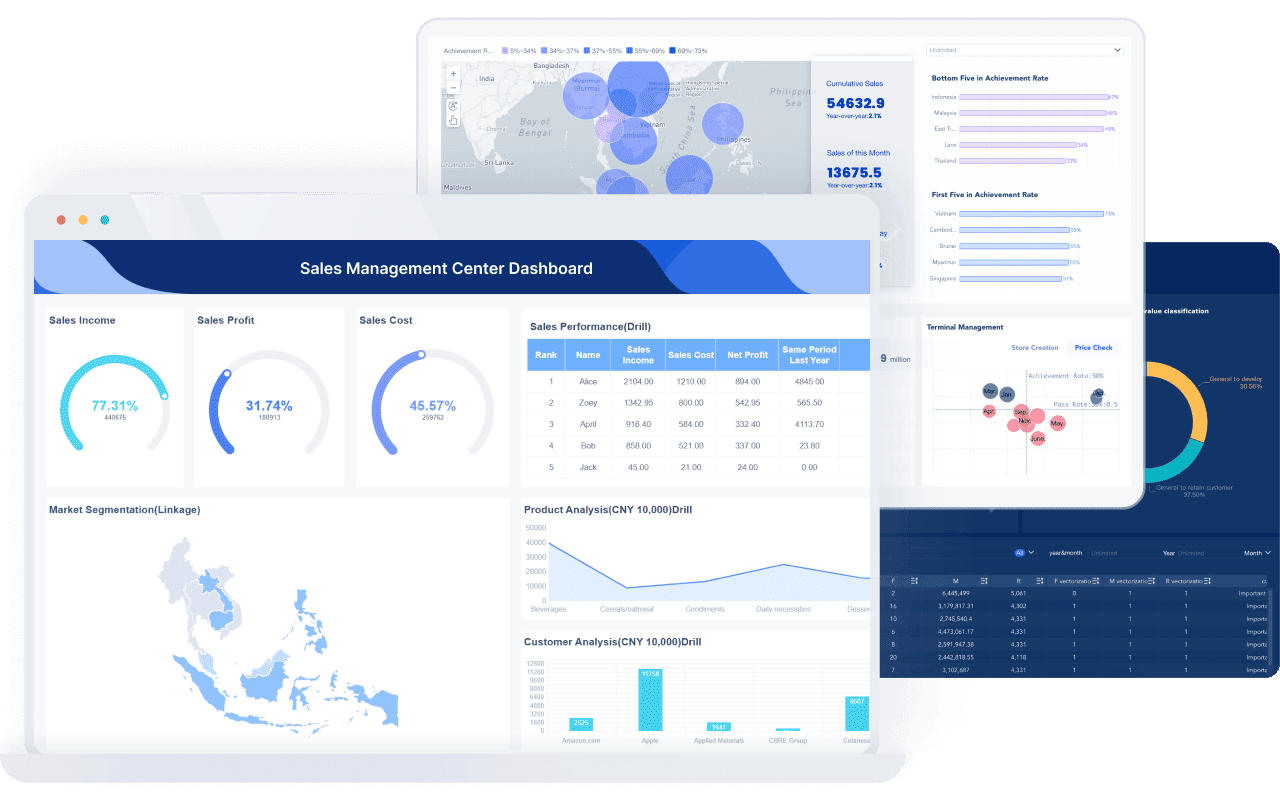
- Predictive analytics help you plan for future patient needs.
- Data visualization tools turn complex numbers into clear stories.
- Natural language processing lets you ask questions and get answers fast.
- Interoperability means you can share insights across departments.
Real-Time Healthcare Data Analytics
You want to see changes as they happen. Real-time analytics let you monitor patient data, track key metrics, and respond quickly. FineBI supports real-time updates, so your dashboards always show the latest information. Tableau and Domo also offer real-time data processing, helping you make agile decisions. With FineBI, you can automate alerts and keep your team informed about critical changes.
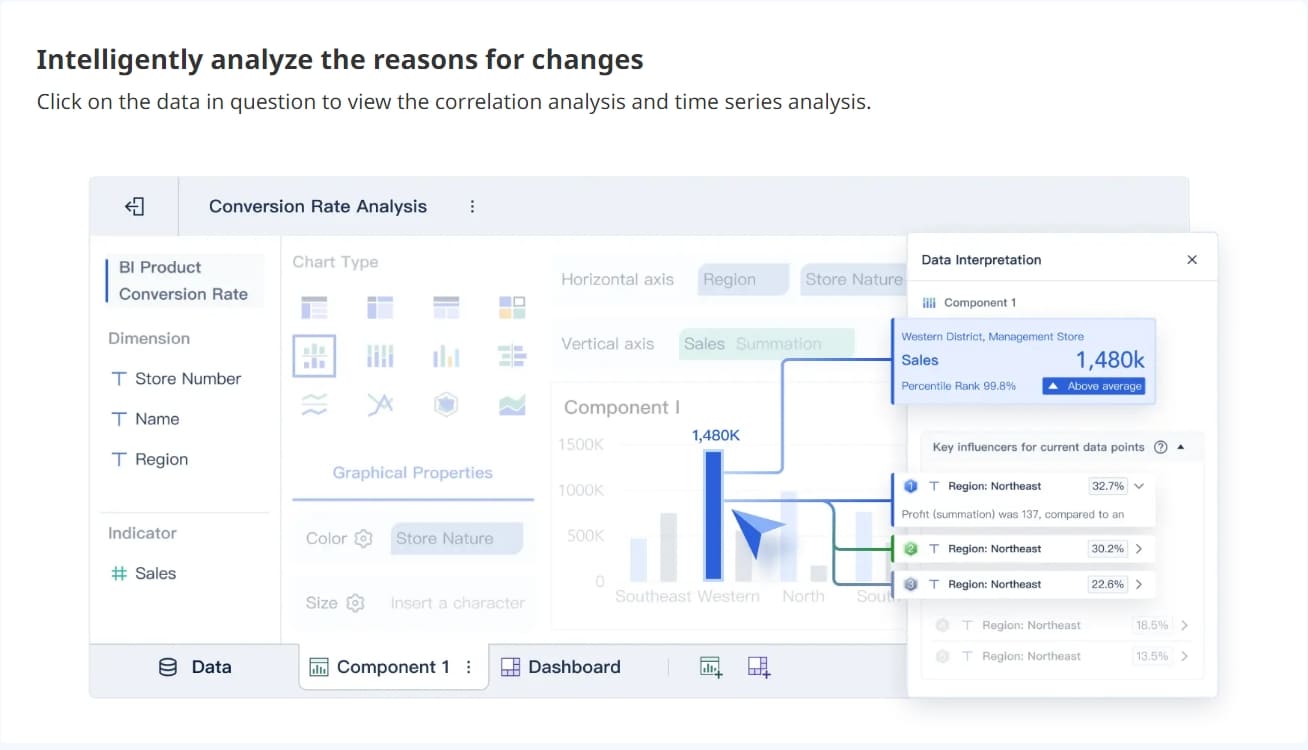
| Tool | Real-Time Data Analytics Features |
|---|---|
| Tableau | Interactive dashboards, real-time analysis |
| Domo | Real-time processing, campaign and patient monitoring |
| FineBI | Instant updates, automated alerts, scalable for large teams |
Security and Compliance Capabilities
You need to protect patient data and meet regulations like HIPAA. Leading healthcare BI tools use encryption, role-based access, and audit logs. FineBI offers enterprise governance, row-level security, and compliance with HIPAA and GDPR. You can control who sees what, mask sensitive information, and track user activity. Other tools, such as Freshpaint and Countly, centralize data and use cryptographic hashing for de-identification. Scrut and Compliancy Group help automate compliance processes, making data security easier for you.
Tip: Always check if your BI tool supports HIPAA compliance and strong data security features. This keeps your patient data safe and your organization protected.
Healthcare BI Tools Comparison Table

Choosing the right BI tool for your healthcare organization can feel overwhelming. You want something that connects to all your systems, delivers powerful analytics, and keeps your data secure. To help you out, here’s a quick comparison table of the top seven healthcare BI tools for 2025. This table shows how each tool stacks up in integration, analytics, usability, compliance, and scalability.
| Tool | Integration & Connectivity | Analytics & Insights | Usability & Interface | Compliance & Security | Scalability & Performance |
|---|---|---|---|---|---|
| Microsoft Power BI | Strong Microsoft ecosystem, many connectors | Predictive analytics, anomaly detection | User-friendly, familiar UI | HIPAA, GDPR, encryption, audit logs | Scales well for large orgs |
| Tableau | Wide range of connectors, supports healthcare standards | Advanced visualizations, AI-driven insights | Drag-and-drop, easy to learn | Secure sharing, compliance support | Handles big data, cloud-ready |
| Qlik Sense | Flexible, many data sources, real-time integration | Associative engine, predictive analytics | Intuitive, customizable | Encryption, audit trails, HIPAA | Grows with your needs |
| FineBI | 60+ connectors, real-time sync, big data platforms, Excel files | Advanced analytics, AI insights, self-serve | Zero-code, drag-and-drop | Enterprise governance, HIPAA, GDPR | High performance, enterprise-ready |
| IBM Cognos Analytics | Integrates with IBM and third-party systems | Enterprise planning, real-time monitoring | Structured, customizable | HIPAA, audit trails, encryption | Suits large healthcare networks |
| Domo | Cloud integrations, automation, real-time feeds | AI-powered, predictive analytics | Modern, mobile-friendly | Trust Program, HIPAA, SSO | Cloud-native, scales easily |
| SAP BusinessObjects | ERP integration, hybrid/cloud support | Comprehensive reporting, analytics | Familiar for SAP users | Strong governance, compliance focus | Works across any environment |
Tip:
If you want a tool that brings together all your data, supports real-time analysis, and offers enterprise-grade governance, FineBI stands out. You get advanced analytics and compliance features that make it a smart choice for healthcare teams.
FineBI connects to over 60 data sources, including big data platforms like Spark and Hadoop. You can process information in real time and enjoy robust governance features. These strengths make it easy for you to turn raw data into clear insights for better decision-making. Plus, you can trust that your organization will meet strict compliance standards.
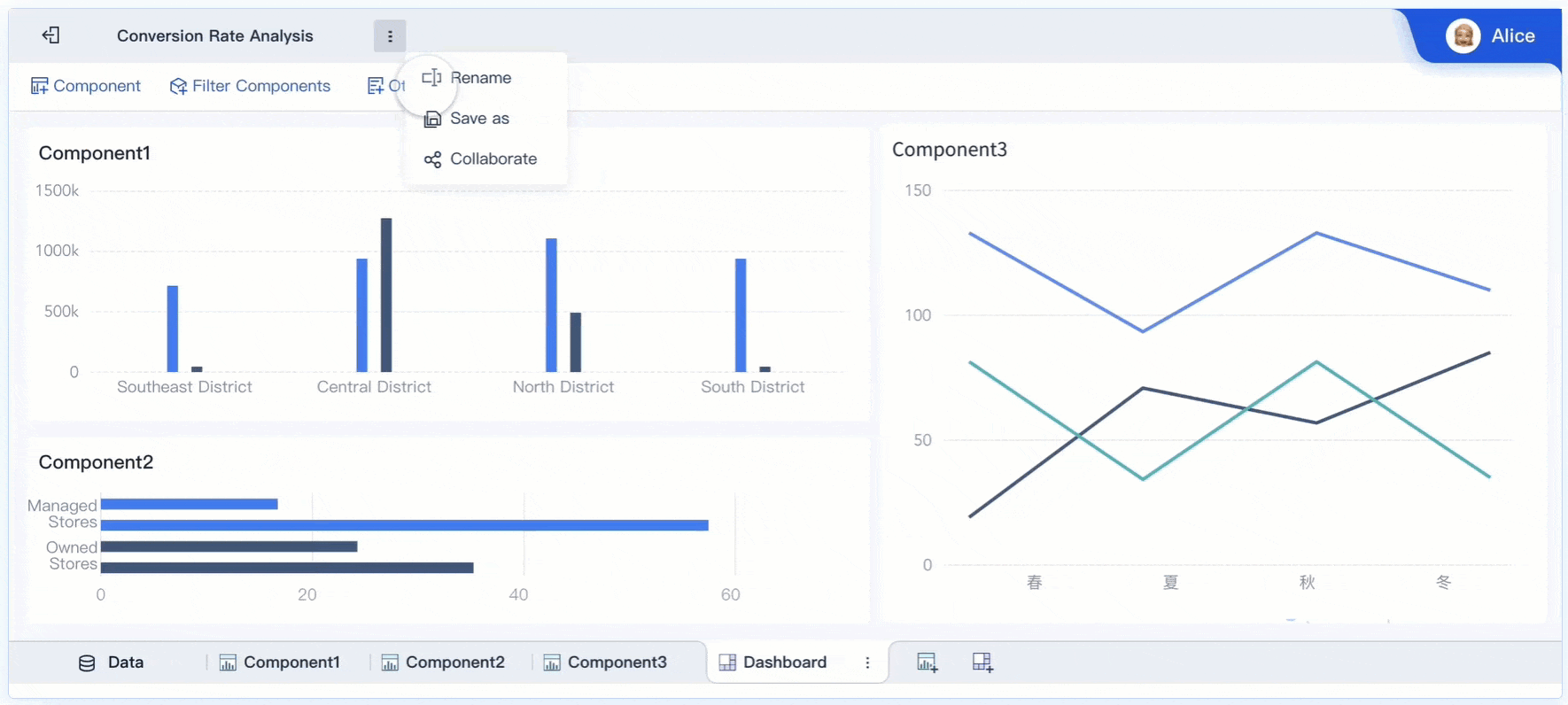
Use this table as a quick reference when you compare your options. The right BI tool will help you unlock the full value of your healthcare data and support smarter, safer care.
Choosing the Right Healthcare BI Tool
Integration with Healthcare Systems
You want your BI tool to fit right into your healthcare environment. That means it should connect with electronic health records, lab systems, and billing platforms. Integration can get tricky, though. You might run into issues like different data formats or old systems that don’t play well with new technology. Here’s a quick look at common challenges:
| Challenge | Description |
|---|---|
| Interoperability | Integrating BI systems with existing healthcare IT infrastructure can be complex, requiring seamless data flow. |
| Lack of Standardized Formatting | Diverse organizations store data in different formats, complicating integration and data matching. |
| Data Regulations and Privacy | Regulations like HIPAA and HITECH dictate how patient data must be managed, adding complexity to integration. |
| Insufficient Human Resources | A lack of experienced personnel can hinder effective data integration efforts. |
| Insufficient IT and Data Resources | Many organizations still use legacy systems, which can slow down the adoption of modern BI tools. |
You need a BI tool that handles these challenges and brings all your patient data together for a complete view. Look for seamless data integration, support for real-time analytics, and easy connections to your existing systems.
Security, Compliance, and Data Governance
Protecting patient information is a must. You want a BI tool that supports HIPAA, GDPR, and other regulations. The best tools use encryption, role-based access, and audit logs to keep data safe. Automated report generation and data lineage tracking help you stay compliant and make audits easier. Strong governance features give you control over who sees what, reducing the risk of mistakes or unauthorized access.
Tip: Choose a BI tool that automates compliance reporting and tracks data lineage. This makes it easier to manage audits and keep sensitive information secure.
Usability and Scalability for Healthcare Teams
You want your team to use the BI tool without headaches. Look for features like easy-to-read dashboards, real-time monitoring, and ai-driven insights. These help you spot trends and act fast. Predictive analytics can show you what’s coming next, while seamless integration prevents data silos. As your organization grows, you need a tool that scales with you and supports more users and larger datasets.
- Data visualization turns complex numbers into clear visuals.
- Real-time reporting keeps everyone up to date.
- Security and compliance features protect patient data.
When to Choose FineBI
FineBI stands out when you need to turn raw data into actionable insights. It’s a great fit if you want tailored analysis for healthcare operations and simplified data processing. The platform helps you focus on deeper analysis instead of manual work. You’ll find clear visualizations that make it easy to share findings with your team. Management can track key metrics and make informed decisions, which is essential for improving patient outcomes. The user-friendly interface means everyone can get involved, making FineBI a smart choice for modern healthcare organizations.
| Why Choose FineBI? | What You Get |
|---|---|
| Transforming Raw Data | Actionable insights for better healthcare analytics |
| Tailored Analysis Scenarios | Solutions for unique healthcare challenges |
| Simplified Data Processing | More time for analysis, less time on manual tasks |
| Enhanced Communication | Clear visuals for better team engagement |
| Presentation of Key Metrics | Easy trend identification and decision-making |
| User-Friendly Interface | Accessible for all team members |
Note: Always align your BI tool choice with your business goals, invest in staff training, and consider piloting the tool in one department before rolling it out across your organization.
Choosing the right healthcare BI tool helps you unlock the full value of your data. You improve patient care, streamline workflows, and track performance metrics with advanced reporting. Here’s what you should keep in mind:
- Integrate all your systems for a unified view.
- Use predictive analytics to spot risks early.
- Protect sensitive information and stay compliant.
Ready to get started?
- Assess your needs and set clear goals.
- Build a plan with milestones.
- Involve your team and focus on privacy.
- Explore solutions like FineBI for smarter analytics.
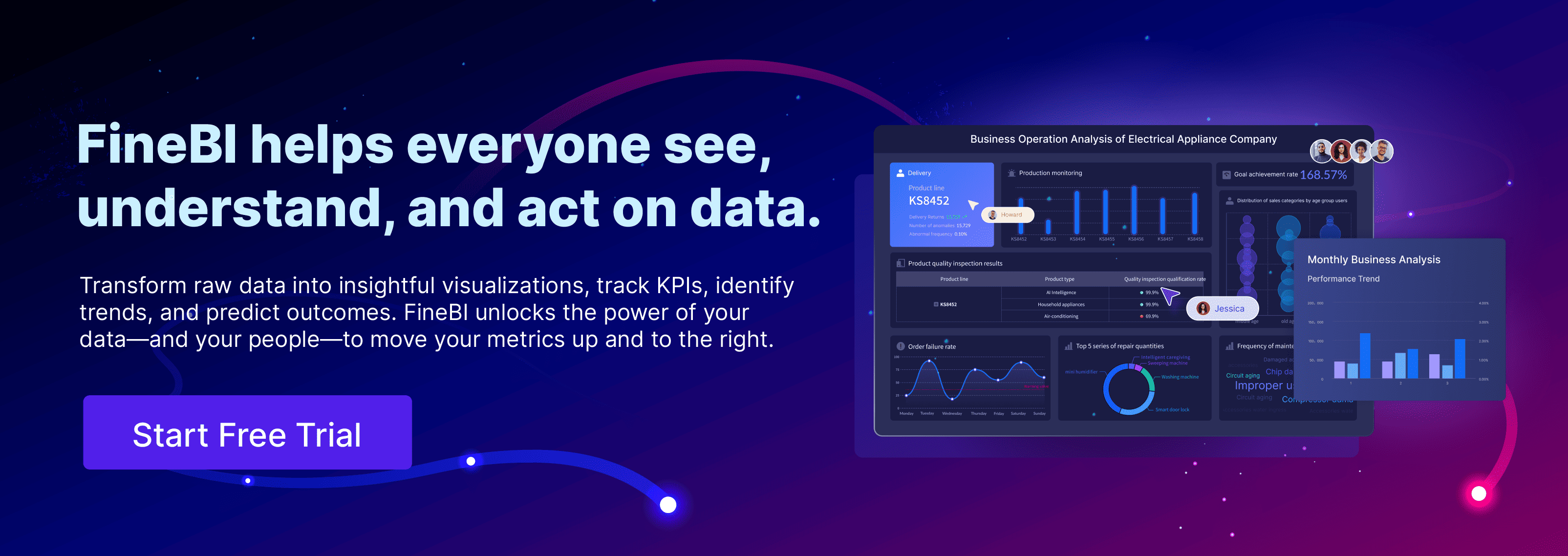
Continue Reading About Healthcare BI Tools
FAQ

The Author
Lewis
Senior Data Analyst at FanRuan
Related Articles

What is Self-Service BI and How Does It Empower Users
Self-service BI empowers users to access, analyze, and visualize data independently, enabling faster, more confident business decisions.
Lewis
Dec 11, 2025

10 Best Market Intelligence Tools to Stay Ahead This Year
Compare the top 10 market intelligence tools for 2026 to find platforms that deliver actionable insights, trend analysis, and real-time data for your business.
Lewis
Dec 10, 2025

Business Intelligence Marketplace Growth and Emerging Trends for 2026
Business intelligence marketplace growth in 2026 is fueled by AI, real-time analytics, and self-service BI, helping organizations drive innovation.
Lewis
Dec 09, 2025



